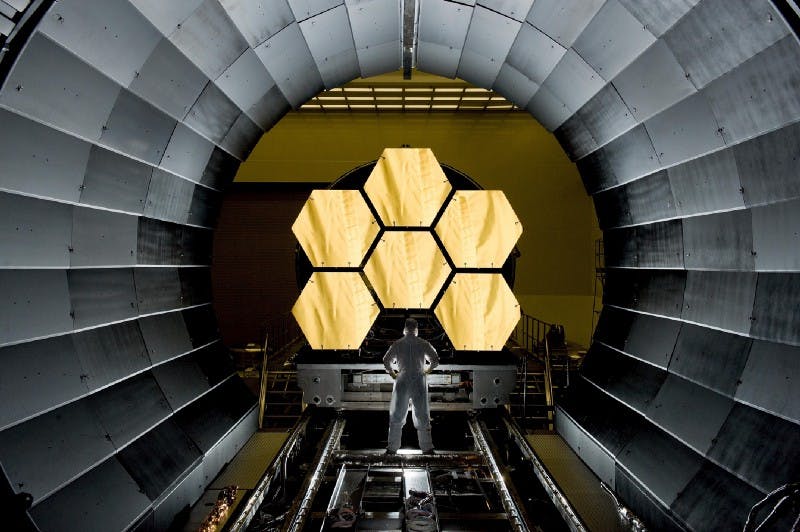For the third straight year global construction giant AIXI dominated the Australian and Asian residential and non residential markets, recording an after tax profit of $1trillion and in the process performing 50% of all construction work of this nature in Australia and Asia.
In a lengthy interview with the world’s largest newspaper “The friends of the people” on this record achievement Company Chair (‘CC’) said that “the results are a ringing endorsement of the company’s decision 20 years ago to commence operations in Australia because of its adjacent geographic location to readily emerging asian markets but also at the time taking advantage of the fact that local Australian construction companies were asleep at the wheel in terms of driving greater efficiencies by fully embracing innovation and also failing to see the huge export opportunities to Asia”.
The meteoric rise of AIXI can be traced back to the decision by the UK to leave the European Common Market in 2016, with the companies six founders at the time working in the finance, banking and tech industries in the EU.
CC said “We had come from all different parts of the world and meet in London around 2010 but when Brexit happened we could see no future in working in the EU. There was an Aussie amongst us, Changchang who had an intimate knowledge of the Australian construction industry and she brought to our attention four very significant pieces of information that convinced us to invest our money into this venture and the rest is history as they say”.
The four crucial pieces of information that were presented to the other founding members of AIXI as business opportunities, were:
Number 1:
The Australian industry was very inefficient and therefore ripe for major overseas disruption. “The existing local contractors all knew about the problem back then but only chose to tinker around the edges and not address the problem head on” said CC. The industry even held conferences bemoaning their failures in this regard and where statements like this confronted attendees:
“The construction sector is undergoing unprecedented change, on-site construction work is moving off-site and in many cases off-shore. On-site construction costs now exceed $100/hr and the effective utilisation of that workforce at best sits at 65 to 70%, depending on how this is assessed. Off-site workforce costs are below $50 per hour and the effective utilisation rate regularly reaches 100% as OSCM processes improve. Shipping costs from anywhere in the globe are typically 1% of the final construction costs and hence there is no longer a cost barrier to defend ineffective construction performance. Wasteful procurement practices, design processes and solutions, and on-site construction practices result in wasted labour, injury, rework and wasted materials to name a few, and this all contributes to falling construction competitiveness While most support the view that systemic change could reduce construction costs by at least 20 to 30% the task of leading change seems always to be in the hands of others. Most still think this conversation is about screwing margins! What is needed to turn this around?”
Number 2:
While some private money was being invested into research and development, government R&D funding was actually in decline at that time. In the above linked article it is quoted:
“Australia’s former chief scientist, professor Ian Chubb, told the 2013 World Building Congress that public spending on construction R&D in Australia had fallen from 2.2 per cent in 1992 to 0.5 per cent in 2010.”
He said, “by neglecting to conduct our own R&D, we not only reduce the chances we will discover new ideas and develop new innovations before our competitors, we also limit our abilities to accept and use those innovations that are developed elsewhere.”
“Turning this around will be challenging. Around 94 per cent of Australia’s construction industry comprises businesses with five or fewer people and less than one percent of construction businesses in Australia conduct their own R&D.”
“In hindsight it is unbelievable that at the very time government funding into construction industry R&D should have been on the increase, the government decided to do the very opposite” said CC.
Number 3:
The predicted urban population growth of Asia. “We just saw this as a massive opportunity to establish a new prefab manufacturing and 3D printing based business in Australia which would serve the needs of not only Aussie’s but also the rapidly growing urban market in Asia” said CC.
CC referred me to an article dated May 2018 and entitled 68% of the world population projected to live in urban areas by 2050, says UN and where it was stated:
“Today, 55% of the world’s population lives in urban areas, a proportion that is expected to increase to 68% by 2050. Projections show that urbanization, the gradual shift in residence of the human population from rural to urban areas, combined with the overall growth of the world’s population could add another 2.5 billion people to urban areas by 2050, with close to 90% of this increase taking place in Asia and Africa, according to a new United Nations data set launched today.
The 2018 Revision of World Urbanization Prospects produced by the Population Division of the UN Department of Economic and Social Affairs (UN DESA) notes that future increases in the size of the world’s urban population are expected to be highly concentrated in just a few countries. Together, India, China and Nigeria will account for 35% of the projected growth of the world’s urban population between 2018 and 2050. By 2050, it is projected that India will have added 416 million urban dwellers, China 255 million and Nigeria 189 million.”
“The local construction industry at the time could not say they were unaware of this huge unban upheaval happening on the door steps of Australia” CC said.
Number 4:
Australians for reasons principally associated with affordability and a lack of suitable new and innovative types of housing options were rapidly falling out of love with the idea of home ownership. This is was particularly the case with young Australians. CC referred to an article entitled Home ownership in Australia in decline for three decades: Grattan Institute and where it is stated:
“In 1986, 58 percent of 25 to 34-year-olds owned their home. That number is now 45 per cent, and the drop has been particularly dramatic in the last decade.”
“That might have been written off as a result of the delay in household formation — people are getting married and starting families later, so they’re buying homes later — but we see the same trends amongst older age groups as well,” said Brendan Coates, a fellow at the Grattan Institute.”
“With Australia’s population reaching 25 million in August 2018 and projected then to hit 36 million people by 2050 it was not as if the construction of residential living options were about to fall of the cliff because clearly there was going to be an ongoing demand in this regard. However in terms of home ownership the local industry back then was not agile and innovative enough to be able to pivot and design and construct new residential living options that made them attractive for people to buy” CC said
CC also pointed out that even in an environment where there was a healthy population growth in Australia, residential construction was actually in decline. The Australian Construction Industry Forum in May 2018 projected:
“Residential Building activity has peaked and is now in decline. While the housing market is in a different stage of the cycle in each of states (and cities), the ACIF CFC expects nationwide Residential Building work to fall this year and for the fall to deepen next year to nearly 5%. This will drag Residential Building activity down from the $101 billion achieved at the peak of the ‘boom’ to $93 billion over the next 2–3 years.”
“This should have set of warning bells for local contractors back then but seemingly only a few recognised the extent of the problem. All this worked in our favour to be able to enter the Australian and asian markets with new, innovative, efficient, safe, affordable prefab manufactured and 3D printing residential living options that were immediately meet with huge consumer approval” CC stated.
From a humble start in a small factory in Cairns in 2018 to the companies present 200 acre location at a massive technology and manufacturing hub located between Port Douglas and Cairns where they employ 300,000 highly trained and well paid staff working shifts 24 hours a day, the company is presently focused on delivering state of the art off site prefab manufacturing and 10D printing residential living options, with an ongoing commitment to reinvest 10% of after tax earnings into R&D.
“We choose our current business site because it was near the Port of Cairns and adjacent to a huge wind farm that guaranteed us cheap but reliable electricity, something we had to have for our prefab manufacturing and 3D printing operations. Also we were very conscious of the then upcoming roll out of the 5G mobile network technology (fibre optic to the phone) and all the wonderful business opportunities it presented” said CC.
The decision by AIXI to financially commit so strongly to R&D is perhaps the one thing above all else that has contributed to its stunning growth and profitability.
“In 2020 we established the AIXI University nearby our present business location with a sole charter of undertaking construction industry R&D and developing “future fit” training outcomes for our workforce. Never in our wildest dreams could be have imagined such benefits to our business by so heavily investing at the front end of our business and benefiting in so many ways at the backend of the business. It has proven to be the perfect business ecosystem for us”.
For all you smart cookies out there I hope you have read this with a smile on your face. Although I am no Michael J Fox I am able to see the writing on the wall without travelling in a delorean. Even Siri supports my proposition that all industries are susceptible to disruption on a scale never previously contemplated when she responded to series of questions I put to her yesterday, namely:
What is the market capitalisation of Netflix in US dollars?
Siri Answer — $151 billion
What is the market capitalisation of Spotify?
Siri Answer — $34 billion
What is the market capitalisation of Airbnb in US dollars?
Siri Answer — $38 billion
What is the market capitalisation of Tesla in US dollars?”
Siri Answer — $60.8 billion
What is the market capitalisation of Uber in US dollars?
Siri Answer — worth $72 billion.
What is the market capitalisation of Facebook in US dollars?
Siri Answer — $520 billion
What is the market capitalisation of google in US dollars?
Siri Answer — $865 billion
What is the market capitalisation of Amazon in US dollars?
Siri Answer — $920 billion
How many people are directly employed by Amazon world wide?
Siri Answer — 566,000 (2017)
What is the market capitalisation of Apple in US dollars?
Siri Answer — $1 trillion
What is the worldwide retail online market worth in US dollars?
Siri Answer — $2.3 trillion dollars in 2017
This exercise is nothing other than a fun “pop quiz” and Siri’s answers must be taken with a grain of salt but I think I have made my point that all industries are susceptible to massive disruption.
Finally, for the record “Changchang” is a popular Chinese female name meaning “flourishing”.
If you want to be part of the construction industry of the future then it’s time to pay attention. Come along to our next seminar “Construction Innovations” on 27 September 2018.
Not intended as legal advice. Read full disclaimer.


